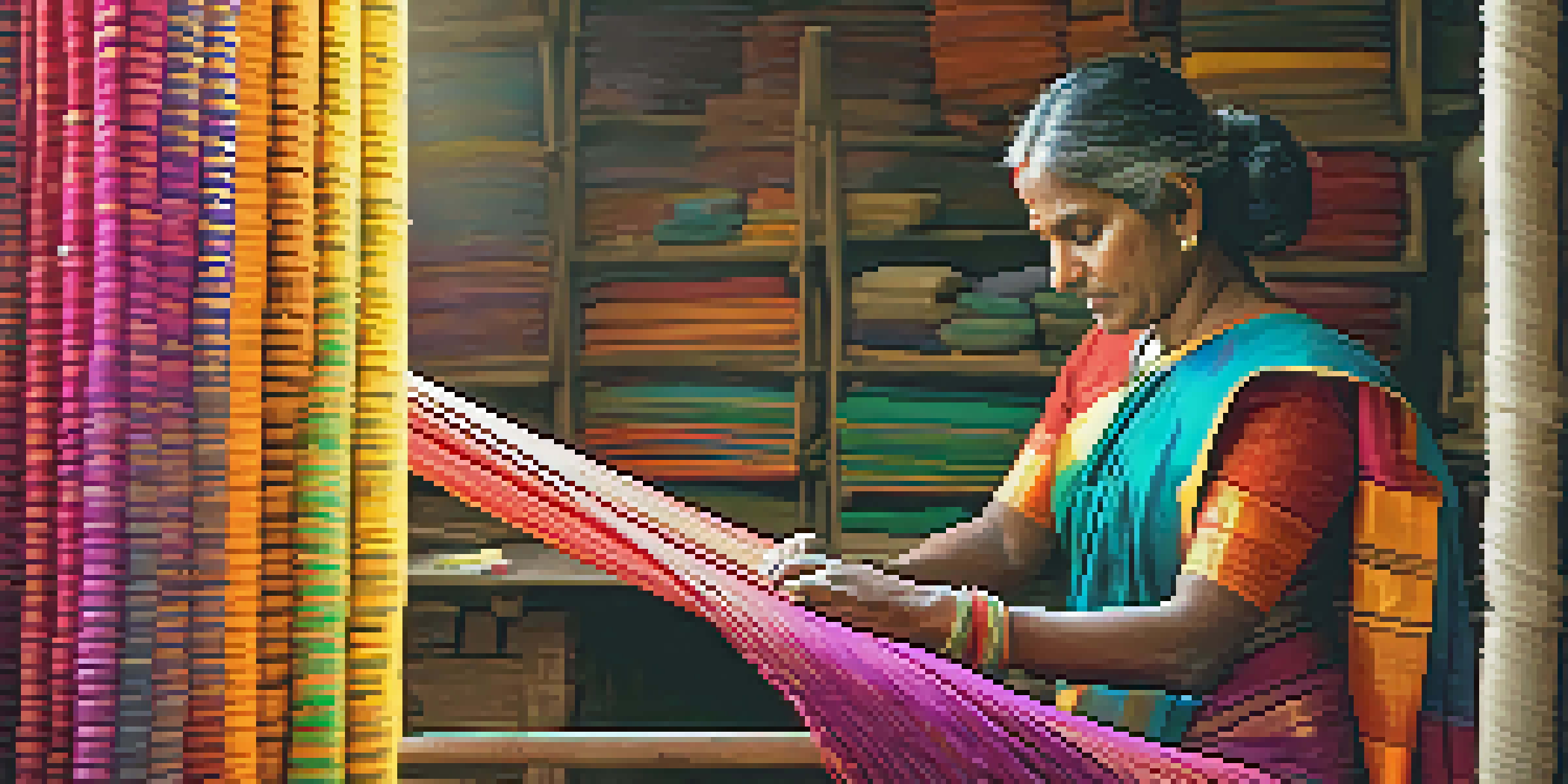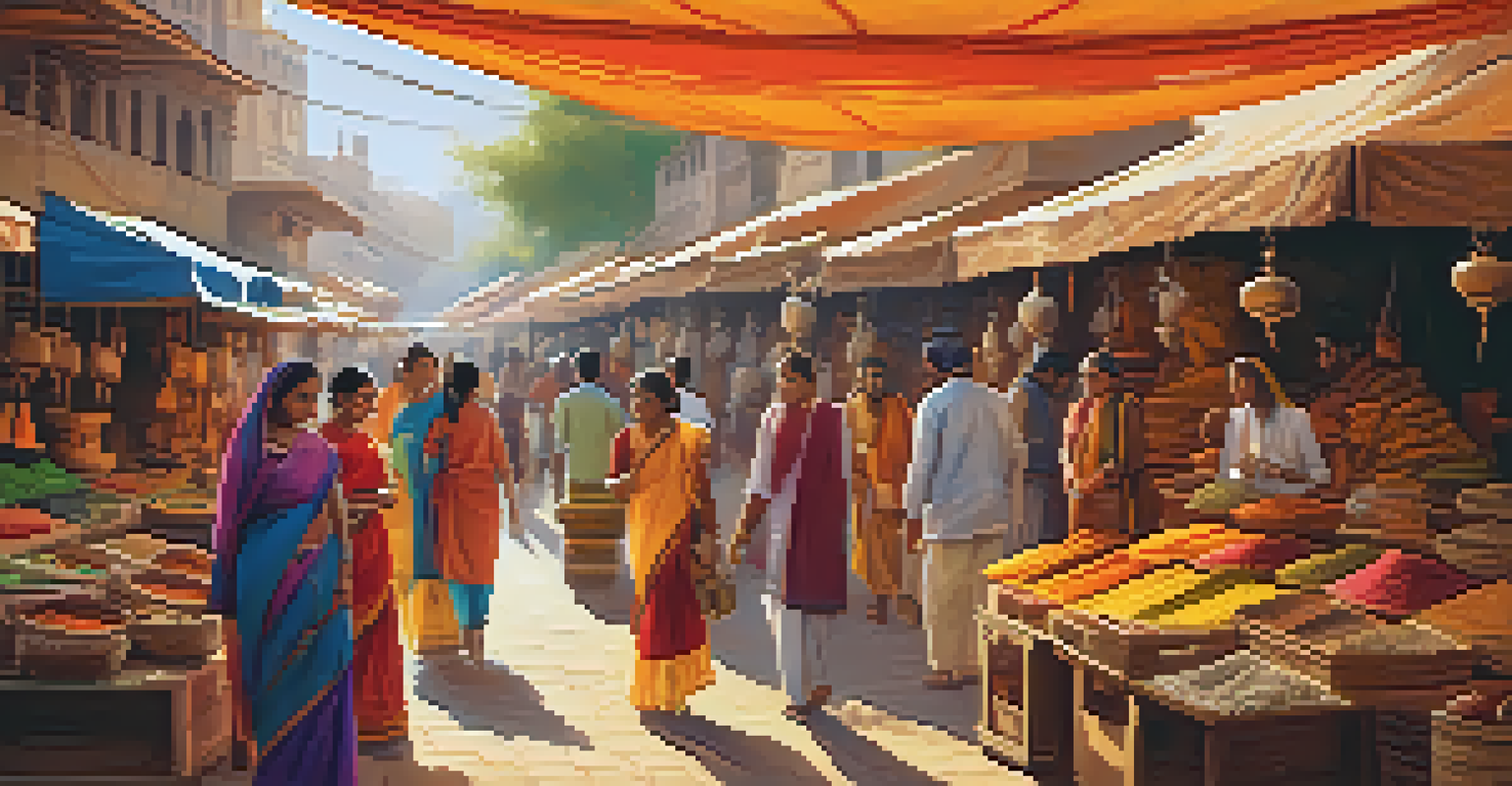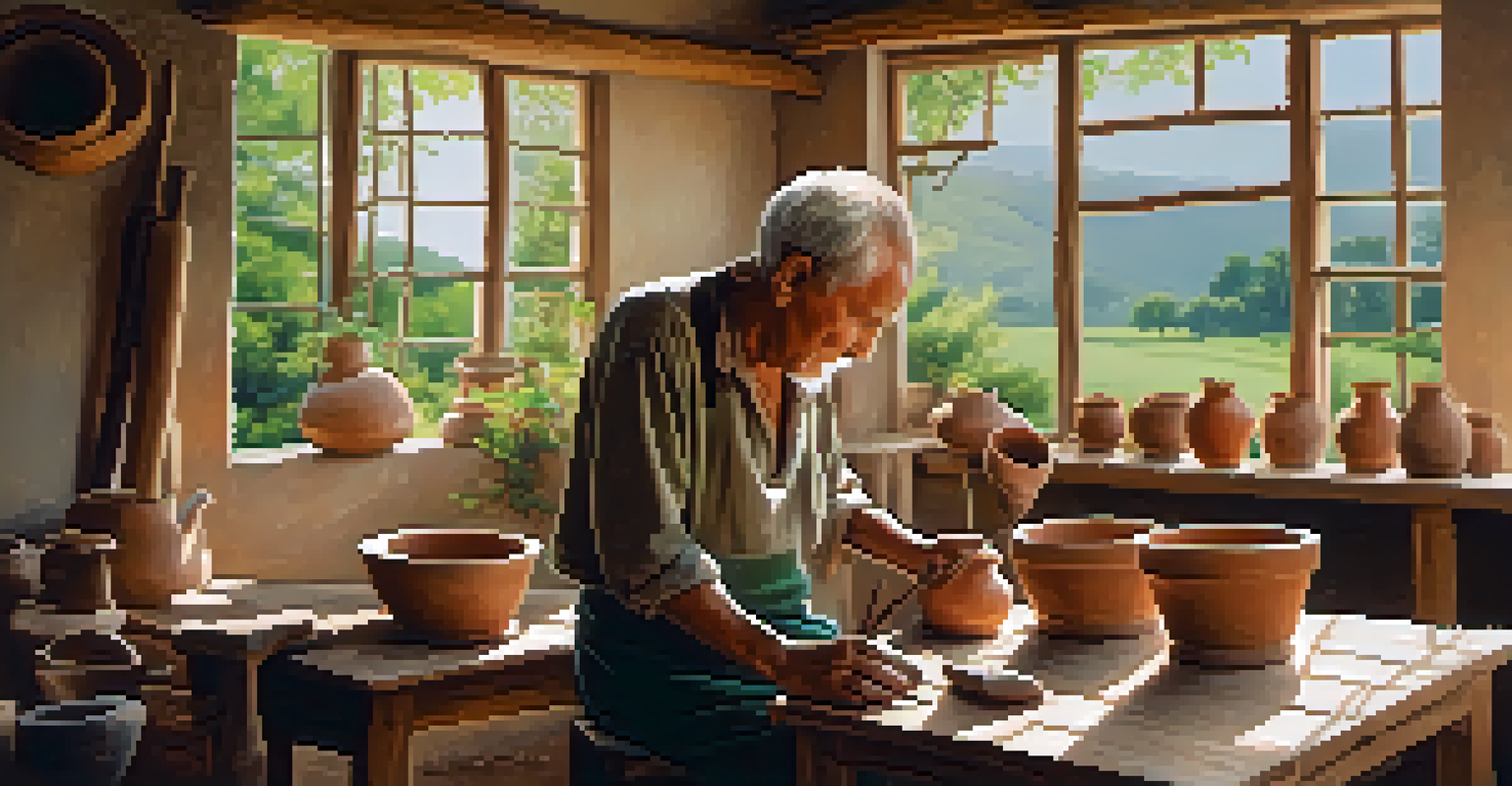Handicrafts of India: Supporting Indigenous Artisans

The Rich Tapestry of Indian Handicrafts
India's handicrafts are a vibrant reflection of its diverse culture and traditions. Each region has its unique style, from the intricate woodwork of Punjab to the colorful textiles of Rajasthan. These crafts not only showcase artistic skills but also tell stories of the communities and their heritage.
Handicrafts are a manifestation of the intimate relationship between the artisans and their culture, encapsulating stories that transcend generations.
Handicrafts in India are often passed down through generations, preserving age-old techniques and practices. This transmission of knowledge helps maintain cultural identity, while also promoting sustainability by using local materials and methods. In a fast-paced world, these crafts offer a refreshing connection to the past.
Moreover, the variety of handicrafts illustrates the country’s rich history and influences, including Mughal, colonial, and tribal art. By supporting these crafts, we help keep these traditions alive and appreciate the artistry behind each piece, making each item more than just a product.
The Role of Indigenous Artisans in Handicrafts
Indigenous artisans are the heart and soul of India's handicrafts. These skilled individuals often work from home or in small workshops, dedicating their lives to mastering their craft. Their expertise not only adds value to the products but also keeps their cultural heritage intact.

Each artisan has a unique story, often tied to their community and traditions. For instance, the weavers of Kancheepuram create stunning silk sarees that symbolize the region's rich textile history. By highlighting these stories, we gain a deeper appreciation for the crafts and the people behind them.
Cultural Heritage Through Handicrafts
India's handicrafts reflect the country's diverse culture and traditions, preserving age-old techniques and promoting sustainability.
Supporting indigenous artisans goes beyond just buying their products; it involves recognizing their contributions to society and advocating for fair wages and working conditions. This support empowers them to thrive, ensuring that these traditional crafts can be passed down to future generations.
Challenges Faced by Handicraft Artisans
Despite their invaluable contributions, artisans often face numerous challenges. Globalization and mass production have led to a decline in demand for handmade goods, threatening traditional crafts. Many artisans struggle to compete with cheaper, machine-made alternatives that flood the market.
Supporting artisans is not just about buying their products; it's about recognizing their value and preserving the rich tapestry of our shared heritage.
Additionally, access to resources such as quality materials and financial support can be limited. Many artisans lack the necessary funding to purchase raw materials or the means to market their products effectively. This financial instability can hinder their ability to sustain their craft.
Furthermore, the younger generation is increasingly drawn to urban jobs, leading to a loss of traditional skills. Without intervention and support, many crafts risk fading into obscurity. By recognizing these challenges, we can work towards creating sustainable solutions that benefit both artisans and consumers.
The Economic Impact of Supporting Handicrafts
Supporting handicrafts has significant economic implications for local communities. When consumers choose handmade products, they contribute directly to the livelihoods of artisans and their families. This support can uplift entire communities, fostering economic independence and reducing poverty.
Moreover, the handicraft sector creates numerous job opportunities, not only for artisans but also for those involved in supply chains, marketing, and retail. By promoting these crafts, we help create a more inclusive economy that values diversity and creativity.
Empowering Artisans Economically
Supporting handicrafts uplifts local communities by creating job opportunities and fostering economic independence.
In addition, promoting handicrafts can enhance tourism, as visitors seek authentic souvenirs and experiences. This influx of tourism can provide artisans with a broader audience and sustainable income, encouraging them to continue their craft while sharing their culture with the world.
Promoting Sustainable Practices in Handicrafts
Sustainability is a crucial aspect of the handicraft industry. Many artisans use eco-friendly materials and traditional techniques that have minimal environmental impact. By prioritizing sustainability, these craftsmen not only preserve their heritage but also contribute to global efforts to protect our planet.
Additionally, sustainable practices can attract eco-conscious consumers who are increasingly seeking products that align with their values. This shift in consumer behavior encourages artisans to innovate and incorporate sustainable methods, ensuring their crafts remain relevant in a changing world.
Supporting sustainable handicrafts also raises awareness about the importance of ethical consumption. By choosing products that are made with care for the environment and the artisans’ well-being, consumers can play an active role in promoting social and environmental responsibility.
The Role of Technology in Empowering Artisans
In today's digital age, technology plays a pivotal role in empowering artisans. From social media to e-commerce platforms, artisans can now showcase their work to a global audience. This accessibility helps them reach customers beyond their local markets, increasing their visibility and potential sales.
Moreover, technology can facilitate skill development through online workshops and tutorials. Artisans can learn new techniques, improve their marketing strategies, and connect with other creatives. This exchange of knowledge fosters innovation and helps keep traditional crafts alive.
Technology Enhances Artisan Reach
Digital platforms empower artisans by increasing their visibility and facilitating skill development in a global market.
However, while technology offers immense potential, it is essential to provide artisans with the necessary training and resources. By creating supportive networks that bridge the gap between traditional craftsmanship and modern technology, we can ensure that artisans thrive in a rapidly changing market.
How Consumers Can Support Handicraft Artisans
Consumers play a crucial role in supporting handicraft artisans. By choosing to buy handmade products, you directly contribute to the livelihoods of these skilled individuals. Shopping at local markets, craft fairs, or online platforms that prioritize ethical sourcing can make a significant difference.
Additionally, spreading awareness about the importance of handicrafts and the artisans behind them can amplify their voices. Sharing stories on social media or discussing the value of handmade goods with friends and family helps create a culture of appreciation and support.

Lastly, consider supporting initiatives and organizations that advocate for artisan rights and promote fair trade practices. By engaging with these movements, consumers can help create a more equitable marketplace where artisans are valued for their hard work and creativity.